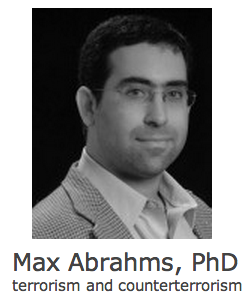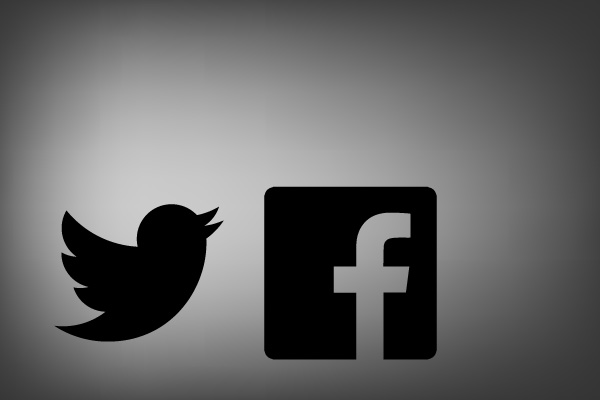If terrorism requires an audience, then the recent mainstream adoption of social media may be giving violent actors a bigger stage than ever before. There are many reasons people lash out at the world, but I don’t think it’s unreasonable to suggest that becoming the center of attention could be a factor pushing some to commit atrocities. Our retweets could be delivering their messages of fear.
This is not to say social media infamy is the cause of any of the recent tragedies in Boston, or Sandy Hook, [Update: or Santa Barbara] or anywhere else. But watching the world feverishly tweet and Facebook post about the manhunt unfolding in Watertown last night frightened me. I couldn’t help but wonder if other angry, disturbed, or mentally ill individuals might be watching, too, and craving that same notoriety. I shuddered to think of a future where a terrorist in hiding laughs as they see their actions trigger millions of mentions.
Some believe that social media’s role is no different than that of traditional media years ago — that terrorists and killers in the 1920s would have just been just as attracted to becoming a newspaper headline as the subject of a sea of tweets. I disagree. Those old outlets were broadcast mediums; they weren’t participatory. Listening to reports of catastrophe on the radio and discussing them with people nearby doesn’t internalize the fear the same way as personally re-sharing and reacting to them in a real-time global forum. Social media instills emotions deeper.
 According to Max Abrahms, PhD, a counter-terrorism research fellow at Johns Hopkins and author of “What Terrorists Really Want” from the International Security journal, “One thing counter-terrorism researchers want to know is what is the motive of the terrorist. They want to know that because they want to deprive terrorism of any utility. If we could remove the value of committing terrorism they wouldn’t do it.” He tells me, “One of the main goals of terrorists is to get attention. By it’s very definition, terrorism requires an audience, so it’s no surprise the advent of terrorism came alongside the growth of mass media in the 1880s. Social media today no doubt spreads the message of terrorists even quicker and to more people.”
According to Max Abrahms, PhD, a counter-terrorism research fellow at Johns Hopkins and author of “What Terrorists Really Want” from the International Security journal, “One thing counter-terrorism researchers want to know is what is the motive of the terrorist. They want to know that because they want to deprive terrorism of any utility. If we could remove the value of committing terrorism they wouldn’t do it.” He tells me, “One of the main goals of terrorists is to get attention. By it’s very definition, terrorism requires an audience, so it’s no surprise the advent of terrorism came alongside the growth of mass media in the 1880s. Social media today no doubt spreads the message of terrorists even quicker and to more people.”
We’ve already seen perpetrators make use of social media to promote their point of view, like Christopher Dorner who was caught in an extended manhunt after killing several police officers in February. He may have wanted the manifesto he posted to Facebook accusing police of corruption to be widely shared. And we shared it. His message hit closer to home because it was our friends distributing it, rather than a newspaper like the letters from the Zodiac Killer.
If killing sprees are a cry for attention or help or an attempt to show the world someone’s pain, then our fixation on tragedy, our willingness to pause our lives and spread the news bit by bit could be playing into their hands.
In fact, when video footage of Osama Bin Laden in his compound was recovered, Abrahms says one of the most striking things we found was that Osama was sitting on his sofa watching himself on television. It suggests terrorists do derive utility from knowing millions of people are paying attention to them.
Our real-time updates can even have real negative consequences for the safety of those involved in pursuits of criminals. In February during the Dorner manhunt, the San Bernardino District Attorney tweeted that “The sheriff has asked all members of the press to stop tweeting immediately. It is hindering officer safety. And last night, the Boston Police Department discouraged people from posting what they heard on police scanners:
But does this kind of attention inspire violence? When I asked Abrahms who studied at Oxford and has spoken on Al Jazeera, he explained “In a sense, yes. Ideally we would completely ignore terrorism.” That’s not to say discussion is bad, and Abrahms notes social media’s potential to surface evidence in investigations. Still, propagating the fear and grief caused by acts of violence has the potential to satisfy those who commit them.
This isn’t a call for guilt, or even abrupt change, but for mindfulness. When the Internet crowds around tragedy, do we think about the impact of feverishly sharing the latest gruesome details? There is a difference between distributing actionable news and trumpeting fear, and being aware of that difference is critical now that we each have our own audience.
Abrahms concludes, and I agree, “if people are sharing news stories they find intellectually interesting, there’s nothing wrong with that. The problem is if people internalize it and come to overestimate the chance of they themselves being victim of a terrorist attack. You don’t want society to overreact.”
